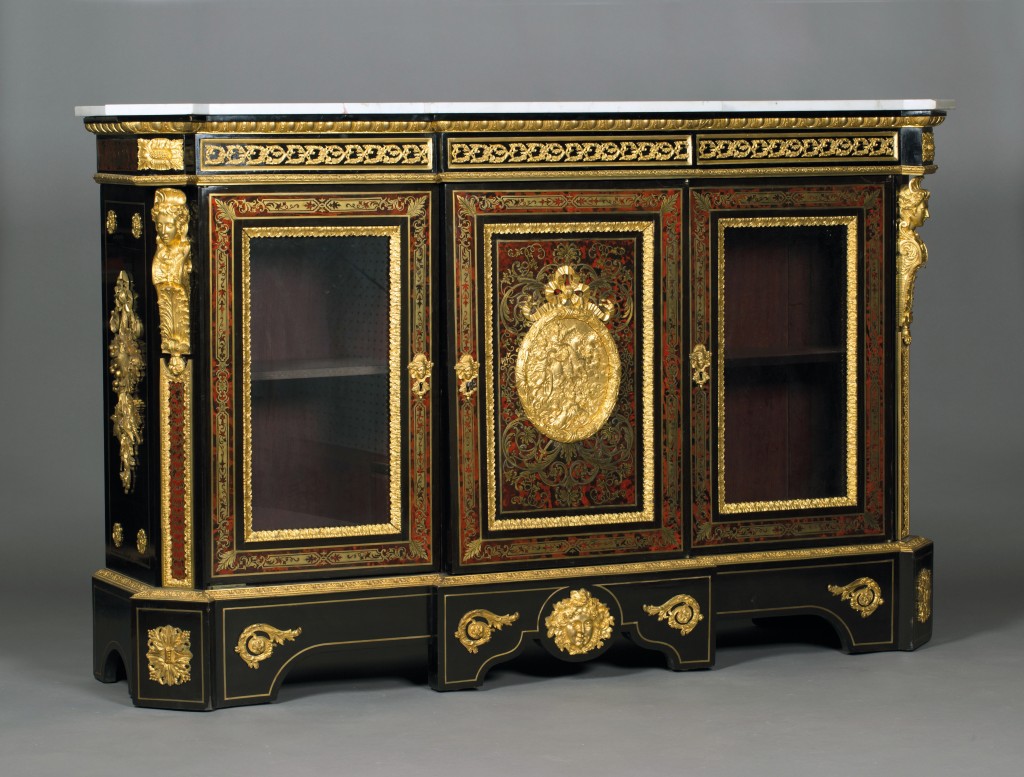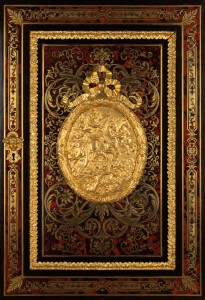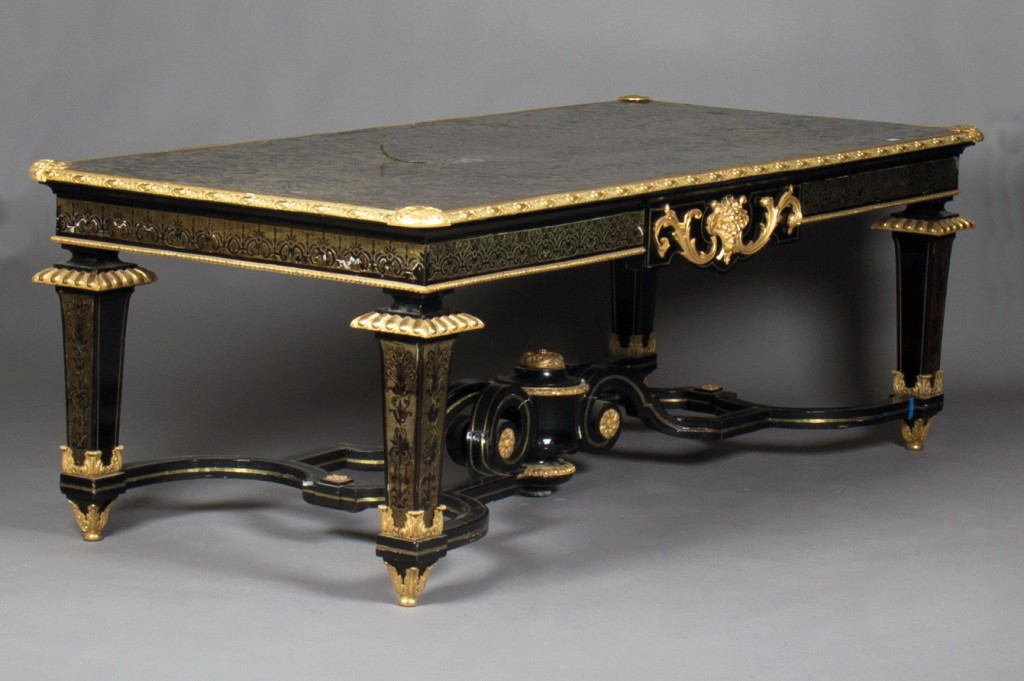
Boulle marquetry is named after the French ébéniste André-Charles Boulle who perfected the use of brass and tortoiseshell marquetry.

André-Charles Boulle was the most celebrated of Louis XVI’s furniture-makers and designers. Today, only a very few attributable examples of his work survive. The costly magnificence of his furniture perfectly matched the court at Versailles and he was appointed ‘ébéneste et marqueteur du roi’ in 1672. The term ébéniste’ refers to a French cabinet maker, as distinct from a Menuisier or joiner.
To create Boulle marquetry, sheets of brass and tortoiseshell are glued together. These sheets are then cut into fretwork designs. The cut layers can then be combined like pieces from a jigsaw puzzle. Where the decorative ground is tortoiseshell inlaid with brass it is termed ‘first-part’; whereas a brass ground with tortoiseshell inlay is known as ‘counter-part’.
To increase the richness of effect the brass was often engraved. The surfaces of such a piece of furniture, where it is not decorated with Boulle marquetry, are typically veneered in ebony. Mother-of-pearl and pewter were sometimes employed in these decorative designs.
In the 19th century Boulle marquetry furniture was widely manufactured in France and England. It was Napoléon III’s consort, the Empress Eugénie, who inspired a revival in Louis XVI taste. This Neoclassical style was expressed in furniture of the very highest quality. The mid-19th century French side-cabinet illustrated is a fine example. Its elaborate ‘first-part’ red tortoiseshell and brass Boulle marquetry and gilt-bronze mounts are typical of the period. The sumptuous door has a gilt-bronze oval plaque beautifully cast with a chariot, classical maidens and cherubs which is framed by a stiff leaf and berry border beneath a delicate ribbon surmount. The English call bronze gilded with ground gold Ormolu, the term is derived from the French ‘bronze doré d’or moulu’. The elegant flower and leaf brass inlay is delicately engraved – resplendent against the red tortoiseshell ground. The cabinet with this rich panel was beautifully crafted and realised £4400 at Toovey’s.

The large mid-19th century French Louis XVI revival Boulle marquetry centre table was of unusually large proportion, measuring over 7½ feet in length. Its rare size ensured that despite its poor condition the hammer fell at £11,500 in a Toovey’s specialist auction of furniture.
These prices confirm the timeless appeal of the finest examples of Boulle marquetry furniture. If you would like advice or to learn more contact Toovey’s furniture specialist, William Rowsell on 01903 891955.
By Rupert Toovey, a senior director of Toovey’s, the leading fine art auction house in West Sussex, based on the A24 at Washington. Originally published in the West Sussex Gazette.